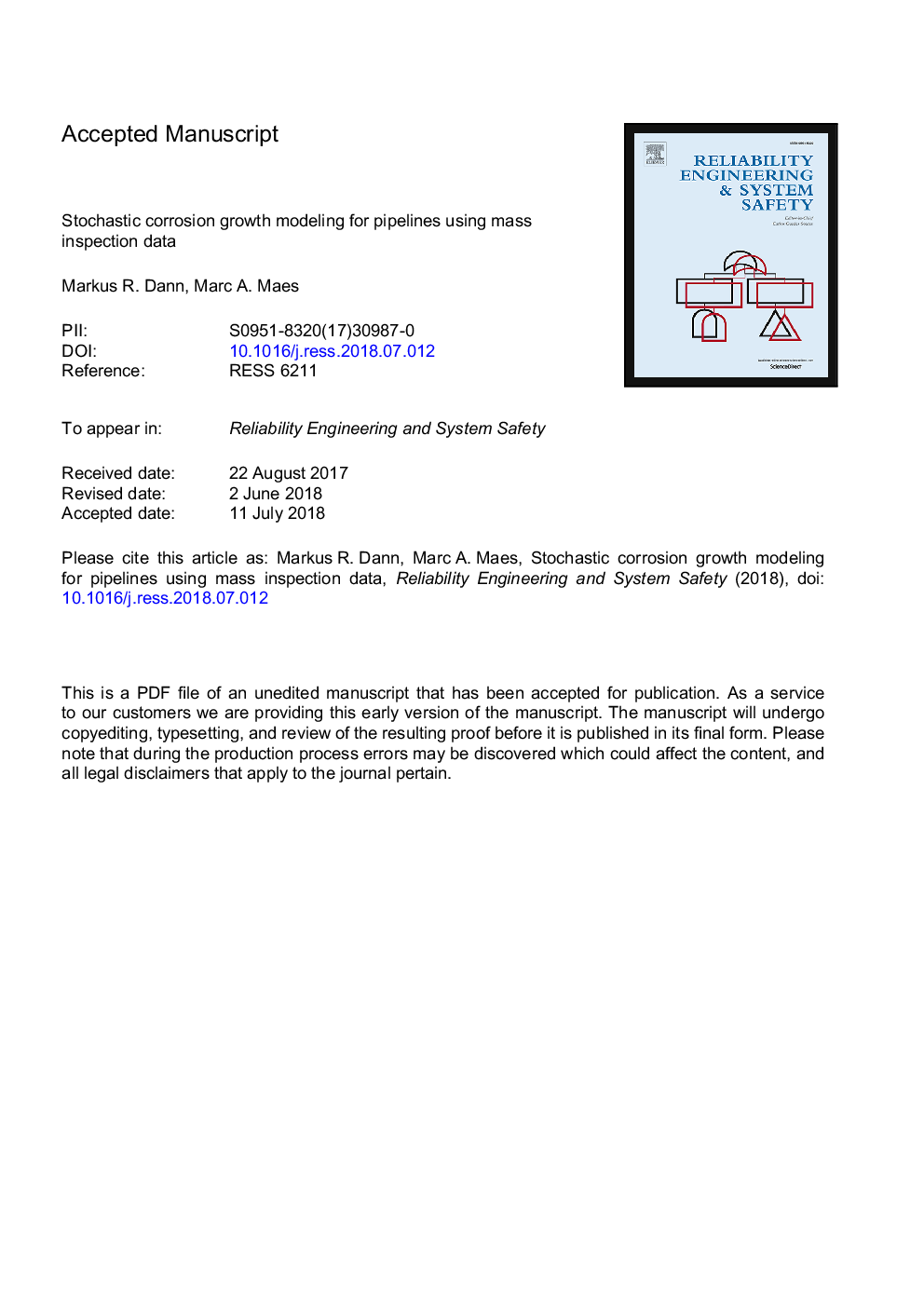| Article ID | Journal | Published Year | Pages | File Type |
|---|---|---|---|---|
| 7195069 | Reliability Engineering & System Safety | 2018 | 29 Pages |
Abstract
Integrity assessment of corroded pipelines requires estimates of the current and future sizes of the features. Corrosion growth is often inferred from inspection results by analyzing the feature-specific growth path. The objective is to introduce a new probabilistic model to determine the current and future metal loss for corroded pipelines based on mass inspection data. The model treats the corrosion features from a population perspective without tracking the local growth of each feature. Measurement errors such as detectability, false calls, and sizing errors are considered to infer the population of actual features from the inspection data. Two separate stochastic gamma processes are applied to model corrosion growth of the already existing and new features between inspections. The proposed population-based model does not require feature matching compared to a feature-specific corrosion growth analysis. The developed model is ideal for pipelines with high feature densities where feature matching can be time intensive and prone to errors. The problem size in the proposed model is independent of the number of observed features and, consequently, efficient data processing is guaranteed. The obtained analysis results are often sufficient to manage the integrity of pipelines without the increased effort of a feature-specific corrosion growth analysis.
Keywords
Related Topics
Physical Sciences and Engineering
Engineering
Mechanical Engineering
Authors
Markus R. Dann, Marc A. Maes,
